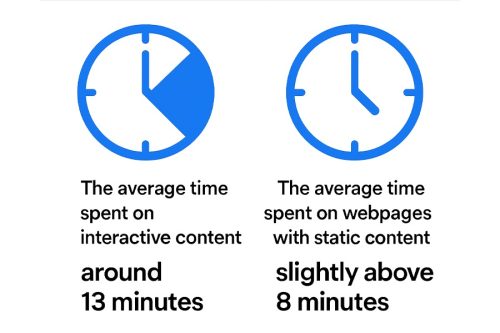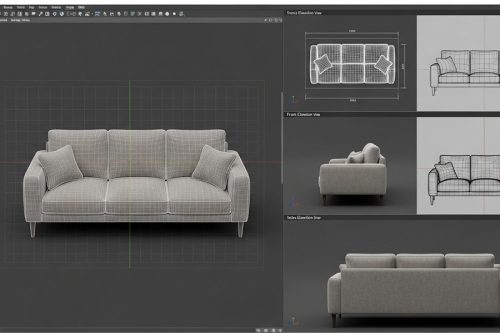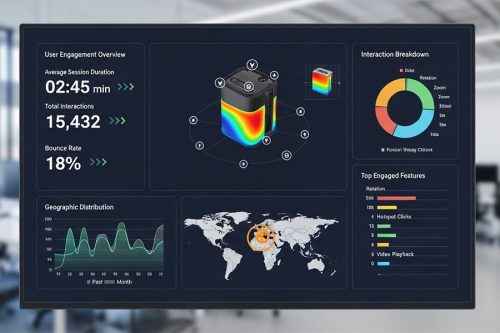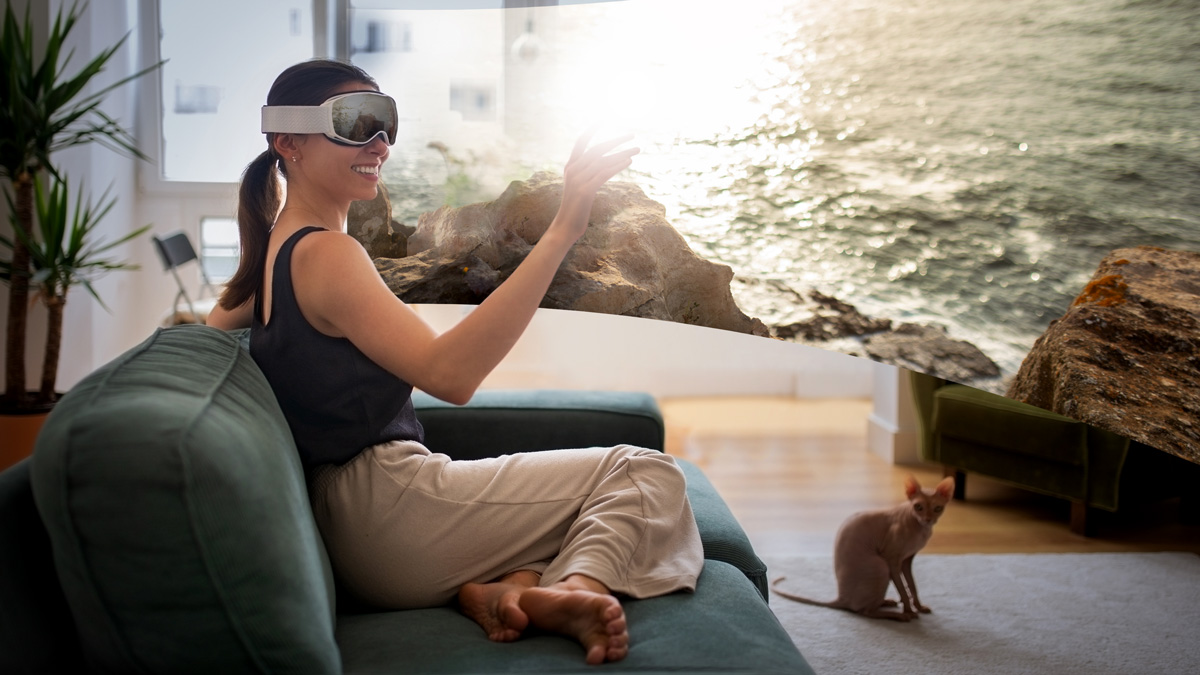
- Why Product Engagement Defines Modern Commerce
- What Is interactive Product experience?
- The Psychology of Interaction: Why 360° Views Increase Engagement
- Measurable Benefits of 360 Product Engagement
- How 360 Product Views Work (and Why They’re Different)
- 360 Product Engagement for Different Business Scales
- Visual Consistency and Brand Trust: The Hidden Driver of Engagement
- The Future of 360 Product Engagement
- Effective Solutions to Overcome Common Adoption Challenges
- Why Choose Immexive for interactive product experience
Technological advances have led to noteworthy behavioral shifts among online shoppers. Nowadays, customers demand more and want to interact with products online to clearly understand their features and capabilities. Adopting interactive Product Experience solutions helps businesses of all sizes deliver high interactivity and provide potential customers with an immersive experience. Simply put, full-spectrum product engagement transforms passive browsing into active interaction, increasing trust and conversions. Various reports, such as those from Imagine, indicate that advanced technologies and infrastructure will deliver meaningful business benefits, both short- and long-term.
In this blog post, we’ll examine all aspects of modern 360 product viewers, use cases of AR-powered systems in eCommerce, and the determining role of 3D models in elevating online stores. By the end, you’ll understand how these solutions drive engagement, satisfaction, and growth. Also, we’ll discuss practical ways to overcome challenges in implementing modern infrastructure and integrating it seamlessly with existing platforms.
At One Glance:
- Modern consumers are no longer happy with static visuals and expect interactive, immersive product exploration.
- Advanced 360 product viewers turn passive visitors into active participants interacting with products, increasing trust and purchase intent.
- Detailed 3D models and AR-powered systems deliver higher engagement, satisfaction, and conversion rates.
- Modern visual commerce systems bring measurable business advantages, such as longer dwell time and fewer returns.
- Integrating 3D renders, AR solutions, and 360-degree product viewers with eCommerce platforms enhances scalability and improves the brand’s visual consistency.
Why Product Engagement Defines Modern Commerce
The way customers interact with your product or service determines its success or failure. In other words, it’s not just about the thing you sell, but about the feeling you create for them. Therefore, the more engagement with the product, the higher several key metrics will be, such as retention rate, loyalty, and, of course, profitability.
The world has evolved at a rapid pace due to remarkable technological advances over the past few years. As a result of this evolution, consumers’ behavior and preferences have also changed. Not long ago, when online shopping was becoming popular, static product images were sufficient to attract attention.
But in the modern era, people demand more. They want to interact with products online, desiring a more interactive shopping experience. If an online shop fails to meet their new needs, they simply refuse to make a purchase and go to a competitor’s website that does. That’s why static images are no longer relevant and helpful.
Experts believe that various engagement metrics, including clicks, rotations, zooms, dwell time, and similar metrics, signal purchase intent. Regarding dwell time, a blog published on Mediafly indicates that the average time spent on interactive content is around 13 minutes, while the average for webpages with static content is slightly above 8 minutes. This increased engagement directly and indirectly boosts sales.

Simply put, if the eCommerce team manages to increase engagement with the help of interactive content, they’ve likely succeeded in increasing revenue. This can be achieved through digital product visualization and interactive product experience, allowing potential customers to experience the items virtually.
Moreover, equipping the eCommerce site with engaging content and a modern 360-degree product viewer enables brands to stand out in an increasingly competitive market, thereby paving the way for converting more visitors into buyers in the future.
Let’s move forward and explore the concept of product engagement in eCommerce.
What Is interactive Product experience?
In this blog, interactive product experience refers to a virtual 3D representation that allows customers to inspect the product thoroughly from different angles. In fact, it’s a photorealistic 3D/AR model of the item at actual size and perfectly tailored to meet the expectations of modern customers, as we discussed in the previous section.
Long ago, eCommerce websites began using simple 360 product viewers, which now feel outdated. Although practical at the time, they cannot provide the immersive experience that people need to engage more deeply with the content, thereby increasing the likelihood of purchase.
The new 360 product view, which boosts engagement, offers many more capabilities. For example, imagine you’re looking for a new smartwatch, scrolling through an eCommerce site. If the website has the required infrastructure, you can rotate a 3D model of the watch to inspect various parts from different angles, and even switch straps or change the watch’s color. Moreover, with augmented reality, it’s possible to virtually place that specific smartwatch on your wrist to see if you like it. This is how interactive product experience benefits consumers in practice.
The table below shows the primary differences between a basic 360 product viewer and the modern solution that can elevate customer experiences:
| Feature | Basic 360 Viewer | Advanced 360 Product Engagement |
|---|---|---|
| Core tech | A series of 2D images stitched into a rotatable spin view | A full 3D model + interactive controls + optionally AR placement (recommended) |
| User interaction | Rotate around a fixed axis; limited zoom; minimal variant changes | Rotate in full 3D space, zoom deeply, change colors/materials/configurations, engage in AR mode, placing the product in real space |
| Experience depth | Surface-level, helps visualize shape/angle, but not comparable to 360 product engagement | Incredibly immersive, engages exploration and contextualization |
| Advantages | Better than static images; shows all sides; modest increase in trust | Drives higher engagement metrics, reduces uncertainty, increases conversion, and lowers returns. |
Now, let’s find out why 360 degree engagement increases interaction and helps capture attention.
The Psychology of Interaction: Why 360° Views Increase Engagement
A 360-degree view turns passive viewers into active explorers. The possibility of interacting with the item fosters a sense of control and presence, leading to a deeper emotional connection between consumers and the product. Interactive eCommerce content feels more tangible and rewarding; as a result, users spend more time exploring, which in turn increases purchase intent.
A ScienceDirect study indicates that 360° interactivity strengthens emotional and cognitive engagement by increasing attention and immersion. When consumers interact with virtual models of products, it triggers the brain’s mirror neurons, simulating the sensation of touch. This is one of the reasons that interaction leads to better brand recall, lower returns, and higher dwell time.

Brands that use AI-powered interactive product visualization systems to increase customer engagement online can offer them a sense of ownership over what they’re evaluating virtually. Research published on arXiv shows that active participation by potential customers not only increases trust and emotional engagement but also enhances satisfaction and perceived product value.
With a clear understanding of engagement psychology retail, we can now examine how its principles translate into practical advantages for eCommerce businesses.
Measurable Benefits of 360 Product Engagement
Directly connecting interactivity to business performance, interactive product experience can deliver critical and quantifiable advantages for businesses. Higher conversion rates, lower returns, and increased dwell time are the most significant ecommerce metrics affected by enhanced interaction and engagement.
In simpler words, higher engagement, stronger emotional connection, and increased decision confidence built through earning consumers’ trust will result in tangible revenue growth and much stronger brand loyalty.
As discussed earlier, uncertain consumers gain confidence when they can assess products through modern 360 product viewers. Immersive interaction with the item influences their purchasing behavior and decision-making process. When making a purchase, customers thoroughly evaluate the product; they choose intelligently, so there are fewer chances that they will return the product because it couldn’t satisfy their needs.
A CGI Background report cites that businesses that implemented interactive visualization saw a notable drop in return rates, around 30–40%, as buyers gained a more realistic understanding of what they’re spending money on.
The same report also discusses the impactful role of 3D content on enhancing conversion rate. Brands using such content and other interactive elements reported a conversion uplift of up to 94%.
Another positive aspect of interactive product experience is the increased dwell time and time spent on the website, which we already examined in detail.
In addition to all these perks, the improved visual commerce performance also significantly influences add-to-cart rates. Shopify reports shoppers who viewed 3D content were 44% more likely to add items to their cart and 27% more likely to complete a purchase, which, in turn, wiil result in long-term loyalty.
In general, despite what many conventional business managers may assume, 3D visual models and advanced 360-degree product viewers are not just decorative features for show. On the contrary, they’re critical components of the modern world that deliver tangible business results by satisfying customers’ evolving expectations.
The next section is more or less technical. We’re going to explain the mechanism behind 360 product viewers.
How 360 Product Views Work (and Why They’re Different)
Various technologies are involved in delivering the immersive experience promised through interactive product experience, ranging from simple frame-based spins to advanced 3D models and AR integration. Each technology powers a different type of 360 product viewer, which we’ll examine in this part of the blog.
Frame-Based Spins (16, 30, 60 Images)
This is the simplest type of 360-degree product viewer. To visualize an item with this basic technology, several photos from different angles are shot. Typically, there are 16, 30, or 60 frames. After that, developers stitch all the images into a web viewer, allowing visitors to drag, swap, and rotate to inspect the product in a 360-degree view.
Although much more effective than static images, as discussed earlier, this basic type can no longer satisfy users’ evolving needs. It notably lacks the interactivity that modern shoppers demand, and it can’t deliver the business results that an advanced 360 product viewer can.
Fully Interactive 3D Models (GLB/CAD)
More complicated technologies are used to create such viewers. Therefore, it’s no surprise that it costs more than the previous option. Experts call models made with this technique digital twins of the actual product because they’re identical to it.
CAD data, 3D scans, or photogrammetry, which are core components of creating such visualizations, capture full geometry, materials, and lighting, rendering items in real time through WebGL or Three.js viewers. This allows visitors not only to rotate and zoom products from various angles, but also to switch colors, materials, or configurations instantly. Moreover, the same files support AR eCommerce integration, enabling customers to place the product in the real world.
In summary, unlike the traditional frame-based spins, 3D models deliver full interactivity and realism, which are necessary for achieving measurable performance gains.
Multi-Row Rotations and Real-Time Shading
By capturing or rendering images across both horizontal and vertical axes, brands offer a multi-row rotation experience that enables users to tilt, flip, and inspect products in a 360-degree view. Static shots, which are a primary component of frame-based visualizations, are not helpful for multi-row rotations. Instead, professionals use real-time 3D rendering to enable full movement around the product.

Additionally, dynamic adjustments to lighting, reflections, and shadows further enhance realism. Technologies such as PBR, short for physically based rendering, are required to make models react to different light sources. The goal is to demonstrate how a product’s materials respond to different lighting conditions, helping customers better understand its quality and features.
AR Extensions for “View in Space” Experiences
3D product visualization enhances the user experience by creating a fully immersive exploration environment. However, it’s possible to go even further by transforming 3D models into a “view in your space” experience. Augmented reality lets users place life-sized products directly into their real environment, helping customers see whether the item is suitable for their needs. For example, a mother can ensure the baby crib is the perfect fit for her child’s room.
Nowadays, there is no need to install an additional application on smartphones to benefit from AR. Using formats like USDZ (for iOS) and GLB (for Android), augmented reality extensions load directly from the product page. Eliminating the need for an additional app streamlines the AR experience, thereby increasing the number of potential buyers who use the feature.
It’s worth noting that a study conducted by Imagine found that AR-enabled visualization can reduce returns by up to 40%. This alone makes a strong case for investing in advanced product viewers.
If you’re curious about how advanced 360-degree product viewers benefit businesses of all sizes, you’ll find the answer to this question in the next section.
360 Product Engagement for Different Business Scales
Ecommerce 3D integration helps small to mid-sized businesses earn their customers’ trust and enhance conversion rates with easy-to-use tools that require minimal setup. For larger brands and enterprises, it goes beyond delivering an immersive shopping experience and provides broader strategic advantages. Simply put, such businesses can leverage these technological advances to create centralized 3D asset management, seamless PIM/DAM integration, and scalable deployment across global markets and diverse product lines.
Let’s explore the next stage of product interactivity that forward-thinking brands can aim for.
Earlier, we explained that AR product engagement lets users place the item they’re assessing in their desired environment and see how it looks there. In other words, this capability bridges the gap between online and physical shopping, addressing the numerous uncertainties that online shoppers face. Additionally, with scalable 3D visualization, users can explore products of various sizes. For example, they can place their favorite TV table in their TV room in different sizes to compare proportions and determine which is best.

In addition to this realistic visualization, real-time configurators also help increase customer confidence, boost conversion performance, and lower return rates. Allowing customers to personalize the item they’re assessing improves engagement. The ability to switch colors and other product features fosters a sense of ownership and increases the likelihood of purchasing that specific item.
In fact, 3D configurator eCommerce platforms set up the infrastructure needed to allow their customers to check an item’s different variants, helping them make informed decisions and reducing dissatisfaction and return rates.
Furthermore, a 360 product platform gathers more in-depth data that businesses can use to better understand each visitor’s interests, preferences, and challenges. This enables data-driven improvements, optimized content, and more personalized marketing strategies, all of which contribute to better overall business performance.
Besides these tangible benefits, interactive product experience can also deliver often-overlooked advantages, which we’ll examine in the next section of the blog.
Visual Consistency and Brand Trust: The Hidden Driver of Engagement
Adopting 3D models, AR-powered configurators, and interactive product experience can significantly enhance brand visual consistency. Branding experts agree that consistent visuals and imagery are extremely important in creating a successful brand in the long term. Also, when customers see that every product looks, feels, and performs the same across all touchpoints, they can trust the business and its offerings more confidently. All of these contribute to higher engagement and, consequently, increased conversion rates.
Siteimprove industry insights show that consistent visual identities across various touchpoints can build greater trust and recognition among customers. By maintaining a high 3D product rendering quality and delivering 360-degree visualization with consistent lighting, camera angles, and backgrounds, target customers receive a strong signal of professionalism and reliability, which adds significant perceived value. Particularly in eCommerce, the higher trust translates into more interaction and notable revenue uplifts.
Conversely, neglecting visual consistency seriously harms the brand. Inconsistent lighting, varied rendering quality, and dissimilar backgrounds convey a sense of chaos, making the brand appear unreliable.
Even if the quality is acceptable, the lack of eCommerce visual consistency can make potential customers question the brand’s reliability, directly affecting engagement and reducing sales.
Overall, adhering to predetermined visual principles is essential to building a more credible brand and driving visitor interaction. Professional interactive product experience is highly effective in this regard and helps business managers maintain visual consistency across all touchpoints.
If implemented properly, AR-powered 360-degree viewers can reinforce the brand’s identity whenever users thoroughly assess a product. Cohesive visuals and superb quality create a premium feel that drives engagement, keeps visitors on the website longer, and ultimately leads to a purchase.
These are some practical 360 product photography best practices and tips that can help in this matter:
- Use neutral or transparent backgrounds to keep focus on the product.
- Maintain uniform lighting and camera angles for a seamless browsing experience.
- Apply consistent framing and rendering quality across product lines.
Follow these guidelines when creating 3D models and renderings to ensure visual consistency.
Next, we’ll explore what the future holds for full-spectrum engagement.
The Future of 360 Product Engagement
As expected, AI-related technologies, such as machine learning, play a defining role in shaping the future of interactive product experience. Automatic rendering done by AI, delivering more realistic results in less time and at a lower cost, is a likely outcome of technological advances in the near future. Real-time 3D in WebXR will enable users to interact and inspect virtual versions of products seamlessly through XR devices and web browsers. Additionally, the rising trend of predictive engagement personalization paves the way to deliver dynamic, tailored experiences to each customer, better responding to their needs.
Therefore, the future of 3D eCommerce depends on three major technological shifts, which are:
- AI-powered automated rendering
- Real-time 3D in WebXR
- Predictive engagement personalization
All of the above directly contribute to the widespread adoption of advanced 360-degree product viewers and AR-enabled infrastructure, which are necessary for delivering a fully immersive shopping experience.
When AI models handle rendering tasks, there will be no sign of costly human errors, ensuring visual consistency. More importantly, the rendering time will be significantly reduced, allowing brands to focus on other aspects of their business. AI visual commerce represents the future, where online shopping may become more popular than in-store shopping.
We explained that there is no need to download an official application to use the AR features of an online shop. Future technological advances will enable AR, VR devices, and web browsers to deliver more seamless real-world product visualization.
The increasingly detailed data gathered by current 360 product engagement systems can later be used to identify repetitive behavioral patterns and offer each customer offerings that are absolutely personalized.

Predictive engagement personalization will enable marketing managers to better understand each customer and craft more effective conversion strategies by leveraging immersive shopping trends and showing them products in the shapes, colors, materials, and so on that they prefer.
Ultimately, these technologies aim to improve performance metrics and financial outcomes, and AR-powered systems, along with 360 product viewers, can be helpful in this regard. In the future, their role will become more pivotal, delivering multiple business benefits.
Despite these proven benefits of interactive product experience, several challenges still hold many businesses back from adoption. In the next section, we’ll explore practical ways to overcome them.
Effective Solutions to Overcome Common Adoption Challenges
Using optimized 3D formats like GLB/gITF helps address file size and performance issues, two major barriers to adopting interactive product experience solutions. Applying texture compression and leveraging CDNs for accelerating loading across the globe are also helpful. Moreover, experienced professionals utilize specific platforms and plugins that can support WebGL and AR APIs to ensure smooth embedding without disrupting existing workflows. With PIM/DAM systems, large brands will be able to maintain consistent asset management, enabling easier updates, centralized control, and scalable deployments.
Replacing static product images with high-quality renders can harm website performance, since 3D models with interactive features are larger. Therefore, adding multiple renders of different products can exceed web loading limits. As a result, the site will slow down and deliver poor performance, damaging the user experience.
To prevent this issue, we use next-generation 3D optimization pipelines, such as polygon reduction and texture banking, to guarantee optimal performance and 360 viewer optimization for our clients’ websites.
Integrating these advanced systems with existing infrastructure, such as CMS or ERP platforms, is among the common eCommerce 3D challenges. In simpler terms, businesses face various obstacles when adding modern 360 product viewers and AR modules to relatively traditional systems. This problem can be solved by opting for a reputable provider whose services are compatible with major CMSs, such as WordPress, and support enterprise systems via custom APIs and middleware connectors.
The proper integration enables 3D assets, product metadata, and automatically updating prices, all of which are crucial for maintaining consistency, delivering excellent performance, and ensuring 3D workflow efficiency.
Challenges with asset management and updates are also among the barriers that hold businesses back from adopting this approach and leveling up their online stores. Naturally, the more products a company offers, the more complex it is to manage hundreds or even thousands of 3D files. Manual updates are time-consuming and prone to inconsistencies, which compromise brand identity. This is where centralized management solutions come in.
Reputable providers equip their clients’ infrastructure with a centralized asset management system that streamlines the management and updating of 3D and AR assets. Additionally, integration with PIM and DAM systems, which manage product information and digital assets, enables businesses to update once and deploy the updated version across web, mobile, and AR channels without duplication or human error.
Lastly, to ensure smooth scaling of 3D and AR offerings and avoid potential inconsistencies, modular systems with API-driven architecture are designed. This translates into easy scaling across regions, languages, and platforms, helping large brands avoid the hazardous complexities of entering a new region or market.
To ensure these challenges are effectively addressed, you must partner with a reputable provider that delivers robust, enterprise-grade 3D and AR integration solutions. Immexive helps businesses scale faster and progress further by offering interactivity through AR and modern 360 product viewers.
Why Choose Immexive for interactive product experience
Immexive 3D offers a fast, scalable 3D eCommerce solution that fits both small retailers and large enterprises without disrupting workflow efficiency. Our platform integrates seamlessly with major ecosystems like WordPress and WooCommerce, empowering global brands while remaining user-friendly. Trusted by previous clients for driving growth, Immexive is your ideal 360 product engagement partner, delivering advanced interactive product experience capabilities that keep your business ahead of the competition.
Key Takeaways:
- 3D models and AR-powered visualization reduce product uncertainty, lower return rates, and strengthen emotional connection with customers.
- Maintaining visual consistency across 3D renders and AR experiences enhances brand credibility and user satisfaction.
- Adopting AI-driven rendering, WebXR, and predictive personalization will define the next generation of immersive eCommerce.
- Partnering with a proven interactive product experience provider like Immexive ensures seamless integration, scalability, and measurable business growth.
What to do Next:
- Do now: Reach out to Immexive via the Contact us page to discuss how our interactive product experience and AR visualization solutions can elevate your brand’s eCommerce experience.
- Learn: Visit the Immexive Blog to explore insights on 3D visualization, interactive product engagement, and AR in retail.
- Decide: Review our 3D Product Visualization page to see how Immexive 3D can integrate seamlessly with your business and help you deliver next-generation product experiences.
Featured Works
- Narian – Shoes Configurator: A 3D configurator that allows customers to interact with different shoe models, rotating them, switching colors, and previewing various styles in real time. The 360-degree product viewer helps in increasing engagement and purchase confidence.
- Yamaha Motor – 3D + AR Configurator: A browser-based tool to customize different motorcycle models by changing colors and other features, inspect them in 360° rotation, and place them in a real environment through augmented reality. This delivers a showroom-level immersion online.
FAQ
What is interactive product experience?
interactive product experience is an interactive product experience that lets users rotate, zoom, and explore a 3D or AR model from every angle. Unlike static photos, it allows customers to examine details, change configurations, and even visualize the product in real environments.
How does 360 product visualization increase conversions?
It helps customers understand the product better by letting them interact with it from every angle, reducing uncertainty. This confidence leads to higher purchase intent and significantly better conversion rates.
Can I add 360 views to my current website or platform?
Yes. Immexive’s 360 and AR viewers integrate seamlessly with major platforms such as Shopify, WooCommerce, and WordPress via lightweight embed codes or APIs. Therefore,no major redevelopment is needed.
What metrics show engagement improvement?
Key metrics include increased dwell time, higher interaction rates (rotations, zooms, color changes), improved add-to-cart ratios, and lower return rates. All these metrics are considered among the strong indicators of deeper customer engagement.
How does Immexive handle performance and security?
Immexive optimizes performance through lightweight 3D formats, CDN delivery, and progressive loading for fast, smooth interactions. All data and assets are stored securely on an encrypted cloud infrastructure, ensuring both speed and data protection.
Nikan



